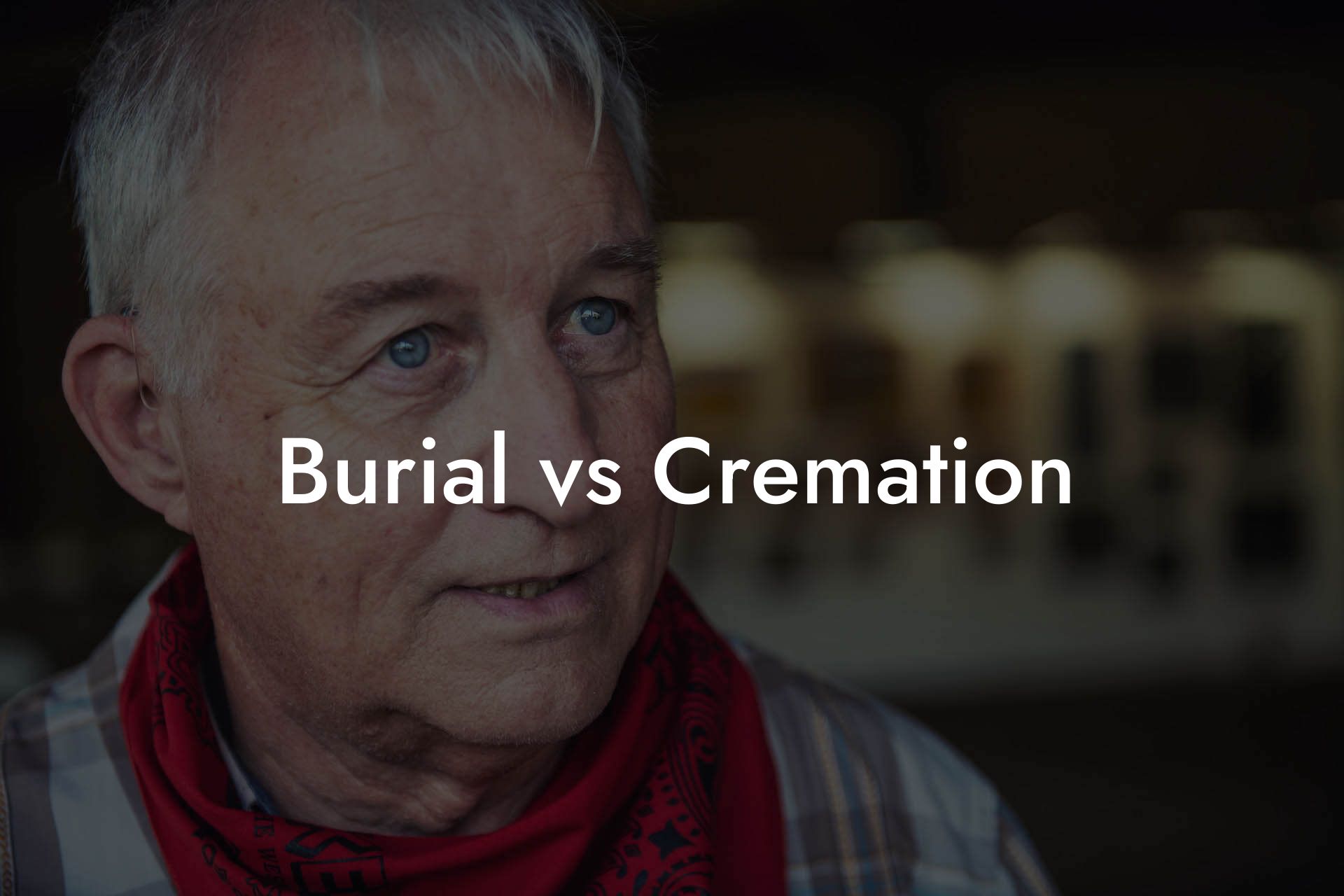Imagine a world where you can honor your loved ones in a way that's not only meaningful but also environmentally friendly and cost-effective. Welcome to the world of cremation, a rapidly growing trend that's changing the way we approach death and bereavement. In this guide, we'll delve into the world of burial vs cremation, exploring the benefits, drawbacks, and everything in between.
Quick Links to Useful Sections
What is Cremation?
Cremation is a process where the body is reduced to its basic elements through high-temperature burning, resulting in ashes or cremated remains. This ancient practice has been around for thousands of years, with evidence of cremation dating back to ancient civilizations in Greece, Rome, and India.
Today, cremation is a popular choice for many families, with over 50% of Americans opting for cremation over traditional burial. But what's driving this trend, and what are the benefits of choosing cremation?
Benefits of Cremation
- Environmental Benefits: Cremation is a more eco-friendly option compared to traditional burial, which requires land, resources, and embalming chemicals. Cremation reduces the body to its basic elements, minimizing the carbon footprint.
- Cost-Effective: Cremation is generally less expensive than traditional burial, with costs ranging from $1,000 to $3,000 compared to $7,000 to $10,000 for a traditional funeral.
- Flexibility: Cremation provides families with more flexibility when it comes to memorialization. You can choose to scatter the ashes in a special location, bury them in a cemetery, or keep them in an urn at home.
- Simplified Logistics: Cremation eliminates the need for a traditional funeral, which can be a complex and time-consuming process. With cremation, you can focus on celebrating the life of your loved one without the added stress of funeral arrangements.
Drawbacks of Cremation
- Emotional Attachment: Some people may struggle with the idea of cremation, as it can be difficult to part with the physical body of their loved one.
- Lack of Closure: Cremation can make it challenging for families to find closure, as there is no physical body to visit or mourn.
- Regulations: Cremation regulations vary by state and country, which can lead to confusion and added complexity.
- Scattering Ashes: Scattering ashes can be a complex process, requiring permission from local authorities and ensuring that the ashes are scattered in a respectful and environmentally friendly manner.
Types of Cremation
There are several types of cremation to consider, each with its own unique benefits and drawbacks. Here are some of the most common types of cremation:
- Traditional Cremation: This is the most common type of cremation, where the body is cremated in a crematorium and the ashes are returned to the family.
- Direct Cremation: This type of cremation skips the traditional funeral service and embalming process, going straight to cremation.
- Green Cremation: Also known as bio-cremation, this type of cremation uses a water-based process to break down the body, reducing the environmental impact.
- Resomation: This type of cremation uses a alkaline hydrolysis process to break down the body, resulting in a faster and more eco-friendly process.
Burial vs Cremation: What's Right for You?
Ultimately, the decision between burial and cremation comes down to personal preference, cultural and religious beliefs, and environmental concerns. Here are some questions to consider when making your decision:
- What are your environmental concerns, and how does cremation align with your values?
- What is your budget for funeral arrangements, and how does cremation compare to traditional burial?
- What are your cultural and religious beliefs surrounding death and bereavement?
- How important is flexibility and simplicity in the funeral planning process?
Resources and Community Support: Your Next Steps
Whether you're planning ahead or dealing with a recent loss, it's essential to have access to resources and community support. Here are some next steps to consider:
- Cremation Associations: Look for local and national cremation associations that provide guidance, support, and resources for families.
- Funeral Homes: Research local funeral homes that offer cremation services and can provide guidance on the process.
- Online Communities: Join online forums and support groups to connect with others who have experienced loss and are considering cremation.
- Memorialization Options: Explore memorialization options, such as scattering gardens, memorial walls, and online tributes, to honor your loved one.
Frequently Asked Questions
Here are some frequently asked questions about cremation and burial:
1. What happens to the body during cremation?
The body is placed in a cremation chamber, where it is exposed to high temperatures, reducing the body to its basic elements.
2. Can I still have a funeral service with cremation?
Yes, you can still have a funeral service with cremation. Many families choose to hold a memorial service or celebration of life after the cremation process.
3. How do I know if cremation is right for me?
Consider your environmental concerns, budget, cultural and religious beliefs, and personal preferences when deciding between burial and cremation.
4. Can I scatter ashes anywhere?
No, scattering ashes requires permission from local authorities and must be done in a respectful and environmentally friendly manner.
5. How do I choose a cremation provider?
Research local cremation providers, read reviews, and ask questions about their process, pricing, and services offered.

